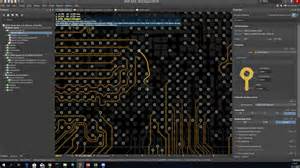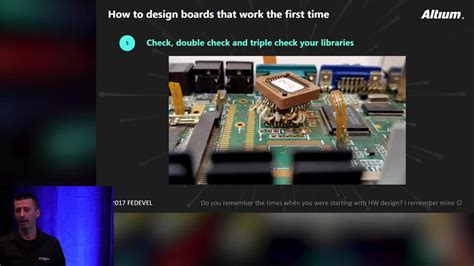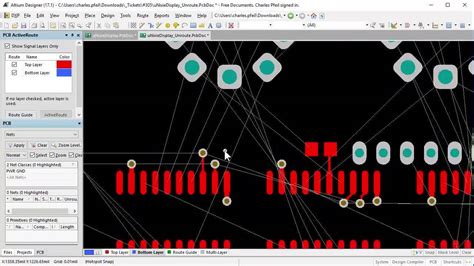What is AdScVid?
AdScVid (Advanced Scenario Video) is a powerful tool used in the development and evaluation of single layer mode quest systems. It allows developers to create realistic simulations of various scenarios to test and refine their AI algorithms. AdScVid 2 is the latest version of this tool, offering enhanced features and capabilities for creating even more complex and realistic scenarios.
Why Use AdScVid 2 for Single Layer Mode EvalQuest?
Single layer mode EvalQuest is a type of quest system that focuses on a single objective or task at a time. This approach simplifies the AI’s decision-making process and allows for more targeted optimization. AdScVid 2 is particularly well-suited for this type of quest system because it allows developers to create highly specific scenarios that focus on a single objective.
Some of the key benefits of using AdScVid 2 for single layer mode EvalQuest include:
-
Realistic simulations: AdScVid 2 allows developers to create highly realistic simulations of various scenarios, including complex environments and interactions with multiple entities.
-
Targeted optimization: By focusing on a single objective at a time, developers can use AdScVid 2 to create targeted scenarios that allow for more efficient optimization of the AI’s decision-making process.
-
Flexibility: AdScVid 2 offers a wide range of customization options, allowing developers to create scenarios that are tailored to their specific needs and requirements.
-
Collaborative development: AdScVid 2 supports collaborative development, allowing multiple developers to work on the same scenario simultaneously and share their progress in real-time.

How to Use AdScVid 2 for Single Layer Mode EvalQuest
Using AdScVid 2 for single layer mode EvalQuest involves several key steps:
Step 1: Define the Objective
The first step in using AdScVid 2 for single layer mode EvalQuest is to define the specific objective or task that the AI will be focused on. This could be anything from navigating a complex environment to identifying and interacting with specific objects or entities.
Step 2: Create the Scenario
Once the objective has been defined, the next step is to create the scenario using AdScVid 2. This involves using the tool’s various features and capabilities to create a realistic simulation of the environment and any relevant entities or objects.
Some key considerations when creating the scenario include:
- Realism: The scenario should be as realistic as possible, with accurate physics, lighting, and other environmental factors.
- Complexity: The scenario should be complex enough to provide a meaningful challenge for the AI, but not so complex that it becomes unmanageable or difficult to optimize.
- Specificity: The scenario should be tailored to the specific objective or task that the AI will be focused on, with relevant entities and objects included as needed.
Step 3: Integrate with the AI System
Once the scenario has been created, the next step is to integrate it with the AI system that will be used for the single layer mode EvalQuest. This typically involves using AdScVid 2’s API to connect the scenario with the AI system and allow for real-time interaction and decision-making.
Step 4: Test and Refine
With the scenario integrated with the AI system, the next step is to begin testing and refining the AI’s performance. This involves running the scenario multiple times and analyzing the AI’s decision-making process and outcomes.
Based on the results of these tests, developers can then make adjustments and refinements to the AI system to improve its performance. This may involve tweaking parameters, adjusting reward functions, or modifying the scenario itself to better reflect the desired outcomes.
Step 5: Iterate and Optimize
The final step in using AdScVid 2 for single layer mode EvalQuest is to iterate and optimize the AI system over time. This involves continually testing and refining the system based on new scenarios and objectives, as well as incorporating feedback and insights from users and stakeholders.
By continually iterating and optimizing the AI system using AdScVid 2, developers can create highly effective and efficient single layer mode quest systems that are tailored to specific objectives and requirements.

Best Practices for Using AdScVid 2 in Single Layer Mode EvalQuest
To get the most out of AdScVid 2 for single layer mode EvalQuest, there are several best practices that developers should keep in mind:
-
Start simple: When first starting out with AdScVid 2, it’s best to start with relatively simple scenarios and objectives. This allows developers to get a feel for the tool and its capabilities before moving on to more complex challenges.
-
Focus on realism: To create effective simulations, it’s important to focus on realism in the scenarios created with AdScVid 2. This includes accurate physics, lighting, and other environmental factors.
-
Tailor scenarios to specific objectives: To get the most out of single layer mode EvalQuest, it’s important to tailor scenarios to the specific objectives or tasks being focused on. This allows for more targeted optimization and better overall performance.
-
Collaborate with others: AdScVid 2 supports collaborative development, which can be a powerful tool for creating more effective and efficient AI systems. By working with others and sharing knowledge and insights, developers can create better scenarios and optimize their AI systems more effectively.
-
Continuously iterate and optimize: Single layer mode EvalQuest is an ongoing process, and it’s important to continuously iterate and optimize AI systems over time. By incorporating new scenarios, objectives, and feedback, developers can create AI systems that are highly effective and efficient.

AdScVid 2 Features and Capabilities
AdScVid 2 offers a wide range of features and capabilities that make it a powerful tool for single layer mode EvalQuest. Some of the key features include:
| Feature | Description |
|---|---|
| Realistic physics engine | Accurate simulation of real-world physics, including gravity, friction, and collisions |
| Advanced lighting system | Realistic lighting and shadows, including support for global illumination and real-time shadows |
| Customizable entities and objects | Ability to create and customize a wide range of entities and objects, including characters, vehicles, and props |
| Scripting and automation | Support for scripting and automation, allowing for the creation of complex behaviors and interactions |
| Collaborative development | Real-time collaboration and sharing of scenarios and progress among multiple developers |
| Integration with AI systems | API for integrating AdScVid 2 scenarios with AI systems for real-time interaction and decision-making |
Examples of Single Layer Mode EvalQuest with AdScVid 2
To help illustrate how AdScVid 2 can be used for single layer mode EvalQuest, here are a few examples of scenarios that could be created:
Example 1: Obstacle Course Navigation
In this scenario, the objective is for the AI to navigate a complex obstacle course as quickly and efficiently as possible. The scenario would be created in AdScVid 2 with realistic physics and lighting, and would include various obstacles such as walls, gaps, and moving platforms.
The AI system would then be integrated with the scenario, and would need to make real-time decisions about how to navigate the course based on its sensors and other inputs. The scenario could be run multiple times with different configurations to test and optimize the AI’s performance.
Example 2: Object Recognition and Interaction
In this scenario, the objective is for the AI to recognize and interact with specific objects within a complex environment. The scenario would be created in AdScVid 2 with a variety of objects and entities, each with their own properties and behaviors.
The AI system would need to use its sensors and other inputs to identify the relevant objects and determine how to interact with them to achieve the desired outcome. This could involve picking up and moving objects, activating switches or buttons, or navigating to specific locations within the environment.
Example 3: Multi-Agent Coordination
In this scenario, the objective is for multiple AI agents to coordinate and collaborate to achieve a common goal. The scenario would be created in AdScVid 2 with multiple agents, each with their own abilities and constraints.
The AI system would need to use communication and coordination strategies to allocate tasks and resources among the agents, and to adapt to changing circumstances and challenges within the environment. This could involve dividing up tasks based on each agent’s strengths and weaknesses, or dynamically adjusting strategies based on real-time feedback and performance metrics.
Frequently Asked Questions (FAQ)
-
What is single layer mode EvalQuest?
Single layer mode EvalQuest is a type of quest system that focuses on a single objective or task at a time, simplifying the AI’s decision-making process and allowing for more targeted optimization. -
How does AdScVid 2 support collaborative development?
AdScVid 2 supports collaborative development by allowing multiple developers to work on the same scenario simultaneously and share their progress in real-time. This enables more efficient and effective development of AI systems. -
What types of entities and objects can be created in AdScVid 2?
AdScVid 2 allows for the creation and customization of a wide range of entities and objects, including characters, vehicles, props, and more. These entities can be scripted and automated to create complex behaviors and interactions within the scenario. -
Can AdScVid 2 be integrated with existing AI systems?
Yes, AdScVid 2 includes an API for integrating scenarios with existing AI systems. This allows for real-time interaction and decision-making between the AI and the scenario, enabling more effective testing and optimization. -
What are some best practices for using AdScVid 2 in single layer mode EvalQuest?
Some best practices for using AdScVid 2 in single layer mode EvalQuest include starting with simple scenarios and objectives, focusing on realism in scenario creation, tailoring scenarios to specific objectives, collaborating with others, and continuously iterating and optimizing the AI system over time.
Conclusion
Single layer mode EvalQuest is a powerful approach to developing and optimizing AI systems, and AdScVid 2 is an essential tool for creating realistic and effective scenarios for testing and refinement. By following best practices and leveraging the full capabilities of AdScVid 2, developers can create highly optimized AI systems that are tailored to specific objectives and requirements.
Whether working on obstacle course navigation, object recognition and interaction, multi-agent coordination, or any other type of single layer mode quest, AdScVid 2 provides the features and flexibility needed to create realistic and challenging scenarios that push the boundaries of what’s possible with AI.
As the field of AI continues to evolve and advance, tools like AdScVid 2 will play an increasingly important role in enabling developers to create more sophisticated and effective AI systems. By staying up-to-date with the latest features and best practices, developers can stay ahead of the curve and create AI systems that are truly state-of-the-art.

No responses yet